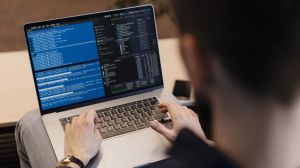Can tablets be the new textbooks?
It is hard to imagine school life without the ubiquitous satchel.
It is hard to imagine school life without the ubiquitous satchel. Many of our favourite stories from school life are illustrated with that trusty old bag without which you would not be considered a serious student by any yardstick. Much has also been said and written about the tyranny of the school bagan average school bag can weigh anything between 10 to 12 kg which constitutes almost a quarter of the body weight of a child.
Like it or not,and even if it takes away some of the romanticism of school life,but the fact is that textbooks offer a very restricted way of learning to students and the stark truth is that the world will eventually learn to move away from them as digital education transforms the education landscape for good. The use of tablets and PCs in schools can ease not just the physical burden of carrying heavy textbooks,it can ease the learning burden as well by making learning more suitable to the learning style of an individual student.
In a country of the size of India which has more than 50% population under the age of 25,meeting the learning ability styles of so many students is an extremely challenging task. This requires a very high teacher-student ratio and unfortunately,India has one of the lowest teacher-student ratio. It is 3,200 teachers per million people in the US,1,500 in the Caribbean,800 in the Arab countries while just 456 in India.
Hence,our current education system cannot bring out every students highest potential as different students have different learning abilities. Some are more receptive to visuals that are seen,some are more receptive to audio that we hear. Then there are students who learn better through information depicted in the form of words or numbers and yet there are some who respond better to kinesthetic,that is they learn better by doing than by hearing or watching.
Unless our education system can cater effectively to the varied learning abilities and grasping power of students,we cant bring out the best in them. Students learn better in small groups like it used to be in the days of Gurukuls.
This awareness calls for a need to re-evaluate and redesign the entire teaching methodology,which is easier said than done. Bringing macro-level changes in the current teaching methodology across India will call for a huge investment,in terms of both time and money.
Fortunately,all is not lost. First,teachers do try to cater to the different learning abilities of the students,even in large groups.
Second,technology-based educational initiatives can fill in this gap. Curriculum-based digital content for digital tablets,is underway across the country by various education companies and they can take care of this diverse learning requirement quite smoothly.
Use of tablets enables students with diverse learning needs to indulge in self-paced learning,which is cooperated,that is,it can be either in groups or students can share information among themselves. There are so many other pros of using tablets in school learning,like students and teachers can effortlessly update information and assignments,concepts are delivered and reinforced more effectively using audio and video,and students gain the ability to interact with the material theyre learning with the help of online assignments.
Not just students,but teachers also have a lot to benefit from as everything is so well organised and in one space. It has been observed that with the passing of each year,more and more readers of all age groups are switching from books to e-books and many schools across the globe are replacing textbooks with tablets.
A joint report by McKinsey and the GSMA envisage that the m-education market globally might be worth $70 billion by the year 2020. It also predicts that the demand for m-education devices like tablets and smartphones could be well worth another $32 billion by 2020. Theres an increasing uptake of tablets in education worldwide. The South Korean ministry of education has taken the radical step of digitising all its textbooks and phasing out printed textbooks by 2015. Students will be able to access digital textbooks through a cloud computing network through tablets,smartphones etc. The ministry plans to invest about $2.4 billion in procuring the equipment.
Not to be left behind,India too has taken several initiatives in this area. The world is familiar with the low-cost Aakash project,Indias dream of developing worlds cheapest tablet PC for students.
Uttar Pradesh chief minister Akhilesh Yadav announced a free tablet PC for every student who completed class X. Private schools are adopting tablets gradually and many state governments are also building up the infrastructure and procuring digital equipment for government schools through public-private partnerships.
Just like every technological advancement brings its own set of challenges,there are many issues that both players in the tablet field and tablet consumers are dealing with at present. Questions like tablet learning leading to increased fatigue of eyes,the screen size of tablets slows down the reading speed in children and many more are being pondered over.
Security issues are also not so difficult to deal with as tablets can be locked so that children cannot install games easily and they can be configured to connect to only approved networks and sites.
Introducing tablets in classrooms will not work as desired if students are left to themselves with these gadgets. The most essential ingredient in digital learning is the need to promote as much interaction between students and teachers as possible. So,while we see the use of digital tablets and other digital tools increasing in schools around the world,it will continue to be teacher-led.
A tablet can be a replacement of a printed textbook but it cant replace teachers and parents. Guided learning will continue to be the norm. Digital tablets,however,will ease the physical burden of students and provide a customised,global learning environment to children to bring out the best of their learning abilities.
The writer is CMD,Educomp Solutions



- 01
- 02
- 03
- 04
- 05



























